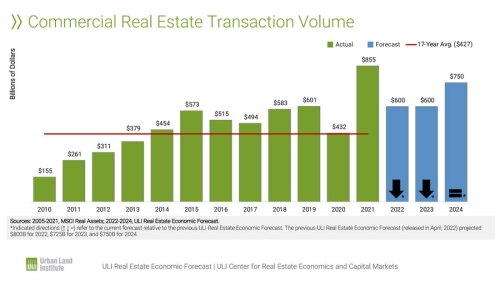Talk of a true urban “transformation” tends to carry more weight when it comes from a former police chief-turned-mayor speaking at a reinvented former trolley warehouse.
The mayor of Tampa, Florida, Jane Castor, greeted attendees at a recent ULI Tampa Bay conference at the brick-walled Armature Works project. She was recently named by The Hill as one of the country’s six U.S. mayors making a difference.
“Please, please bring us your ideas,” said the career law enforcement officer who handily won election for mayor last year. “If I hear anyone at the city utter the phrase, ‘That’s the way we’ve done it,’ they’ll be shot at dawn.”
The fast-growing city of 400,000 residents ranks high as a college town and destination for young entrepreneurs, leading the state for growth in high-income jobs. Threaded with pocket neighborhoods, it has a larger identity as the heart of the Tampa Bay metro area, with three million residents. The National League of Cities will convene there in November.
At the trends conference, the mayor also cited some of the city’s challenges. Similar to other fast-growing areas, Tampa wrestles with traffic congestion and housing shortages. Pedestrian fatalities are a chief concern. Leaders must also consider limited drinking-water supply, rising tides, and increased hurricane activity.
Housing
The former police chief cast a street-level housing vision framed around revitalizing neighborhoods that have been neglected.
“The last thing we want is to see diverse residents pushed out of neighborhoods that they’ve lived and worked a lifetime to be part of,” she said. “All of our neighborhoods have unique identities, and to connect those neighborhoods is very important.”
Castor said that Tampa seeks ways to lower land costs and work with builders who can leverage economies of scale on infill projects. In addition to relying on low-interest mortgages and downpayment assistance, the city seeks affordable units within market-rate projects.
Kristine Smale, senior vice president of research at Meyers, told the group that Tampa experienced more moderate home-price appreciation than other Florida markets. Builders are pivoting to smaller houses with lower prices, she added.
“Tampa remains reluctantly affordable,” Smale said, adding that it was second in affordability in Florida, after Jacksonville.
A tight housing market, with less than three months of single-family inventory, challenges buyers and the city often outperforms the United States in terms of sales. The biggest share of people shopping Tampa home listings live in Orlando, according to research cited by Smale.
Transportation
Castor said she initially hoped to provide transit from downtown to Tampa International Airport during her first few years in office. That momentum, however, slowed. Planners called for three to four years of environmental studies.
“The mascot for these projects could be the snail,” she said.
Legal challenges to a voter-approved transportation tax have slowed plans for rapid bus service from downtown to the University of South Florida. The tax could also extend streetcar service. Related land use revisions are also expected.
“If it [the tax] doesn’t go through, I’m going to fling myself off a curb somewhere and then pick myself up again,” she joked.
Electric bikes and scooters are filling transportation needs, regardless of whether people love them or hate them, Castor added. And in the long view, talks with railroad-track owner CSX could lead to more permanent transit solutions.
Lifelong Tampa resident Kevin Franzese later commented that Tampa has been fortunate to have consecutive mayors with vision. The Bank of OZK executive said that Castor is building on former mayor Bob Buckhorn’s legacy of re-creating an underused riverfront and downtown “that used to roll up the sidewalks at 5 p.m.”



